Ngym (Tran Quang Trân) or the acrid sweetness of Hanoi
Trân Quang Trân (1900-1969), better known as Ngym, and also Nghi Am, is an immensely gifted artist whose talent is yet to be fully discovered.
He entered the Hanoi College of Fine Arts in 1927 and graduated in 1932 in the school’s third graduating class. While most students starting school were in the 18-20 age range, he was 27 years old while his classmate Le Thi Luu was just 16 years old. This third graduating class will prove to be rather mediocre: only Le Thi Luu and, to a lesser degree, Nguyen Cao Luyen, will stand out for their talent. This is quite a contrast to the first graduating class (1930), with Lê Van Dê, Mai Thu, Nguyen Phan Chanh, Le Pho), the second (1931) with To Ngoc Van, Vu Cao Dam or the seventh (1936), that of Tran Van Can, Nguyen Gia Tri, Luu Van Sin, among others.
He was admitted into the College of Fine Arts after having spent years in oil exploitation in Haiphong and then in a lamp factory in Dap Can after finishing his business studies.
This early career explains why raw material and technology, rich and modernist concepts, strongly influence the artist’s work.
Even before he graduated, Tran Quang Tran participated – modestly – in the Colonial Exhibition in Paris in 1931. Victor Tardieu entrusted him and other students (Vu Tien Chuc, Luu Dinh Khai, Tran Binh Loc, Pham Quang Hau) with the study of “wrought iron grids and consoles”.
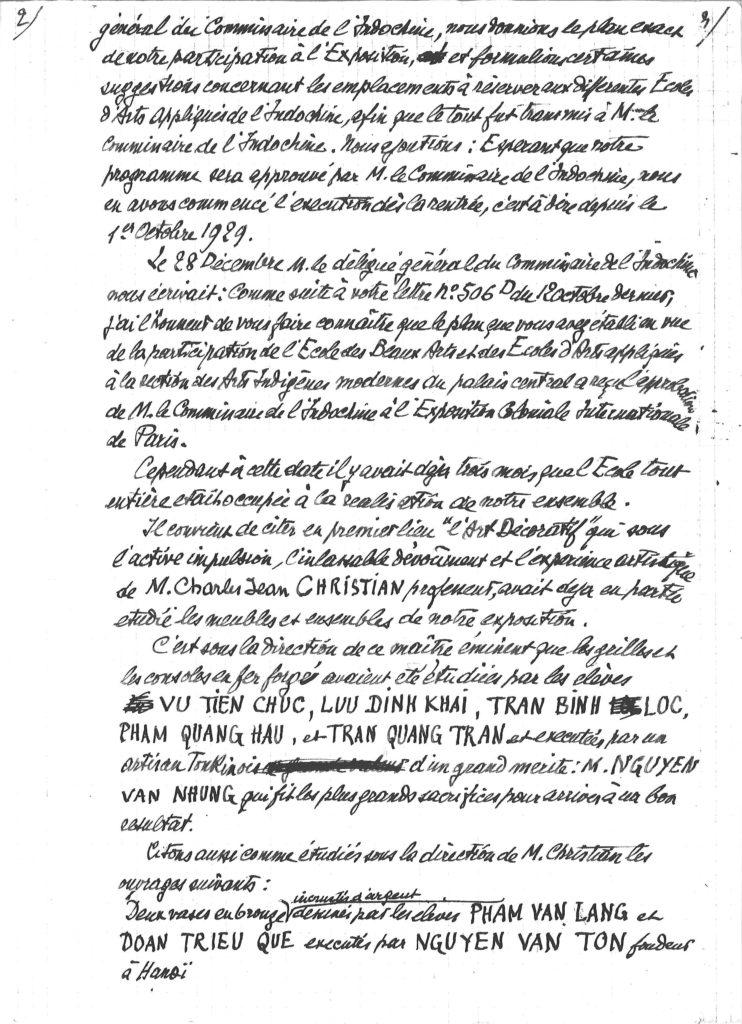
That same year, his name appears at the bottom of a « Relevé du Mot-Cot” presented below on Plate IX in “Trois Écoles des Beaux-Art de l’Indochine”, a booklet published in Hanoi in 1931 by the General Government of Indochina.
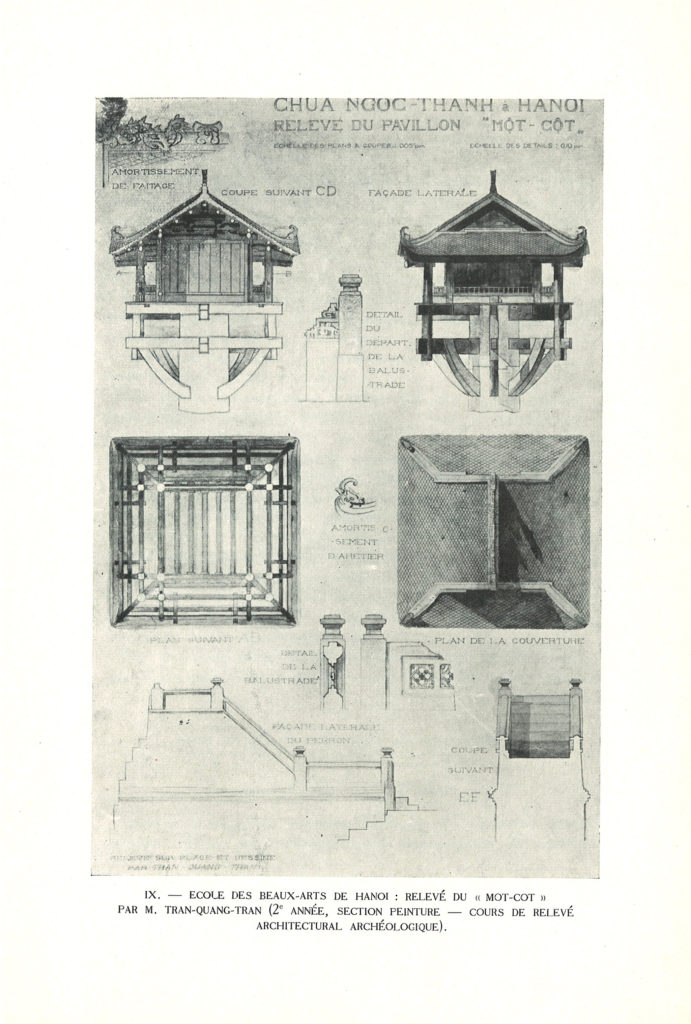
Two inconclusive trails guide us to his work. A third, more compelling, helps us discover his talent.
The first trail, more phantasmagorical than real, brings us to lacquer and its ideological interpretation in the official Vietnamese historiography: since the 1990s, with the appeasement brought by the “Doi Moi”, there is a quest to identify a local origin, not to the lacquer, which is obvious and true, but to the pictorial expression in lacquer, which is false. This quest is supported by contemporary “Boudarel“, and Tran Quang Trang is featured front and center in the effort to validate this dogma. Yet our artist is mostly interested in the materials that form lacquer. Specifically, he is interested in laccol, a derivative of pyrocatechol extracted from the lacquer tree, which through oxidation produces the actual lacquer. The artist is much more interested in material research and technique development than in the composition of a work in lacquer. In this blog we have already shown the importation of the art of lacquerware from France to Vietnam and how it was taught at the Hanoi College of Fine Arts. (here or there)
The second trail, instructive, shows us a perhaps excessively classical Tran Quang Tran-Ngym when he expresses himself in oil on canvas like this one from 1961 (“Tay Ho”, the Western Lake in Hanoi).
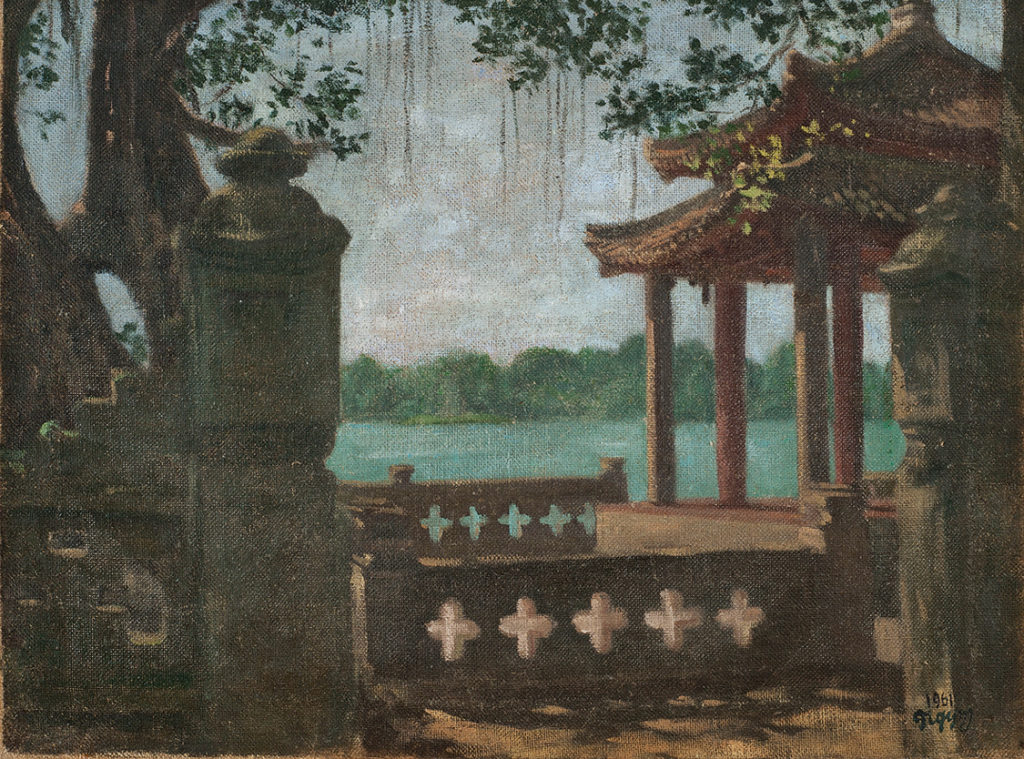
His talent lies elsewhere: in drawing, which is the third trail. He integrates the beautiful and great history of Vietnamese pictorial art through a series of some 135 pencil drawings on paper. The fragile, reinforced paper he uses is a testament to its scarcity in those years. He is a chronicler of his time: from 1949, he taught at the Hanoi College of Fine Arts, and from 1958 to 1962 at the “Vietnamese Film Studio”, where he met many prominent figures of the North and captured them in some 70 portraits from the late 1940s to the early 1960s. Many of these chosen figures were participants – very often disillusioned – in the “Nhân Van-Giai Phâm” movement (Humanism and Beautiful Works). He is also a topographer of his time, offering us some 65 views of Hanoi, an enchanting city if ever there was one, at the time when all was changing.
His 1949 self-portrait, drawn in the midst of the Indochina war, is remarkable for the acuity of his gaze and the dignity of his pose, essential qualities of the witness he will become. The artist will produce other self-portraits at different ages.
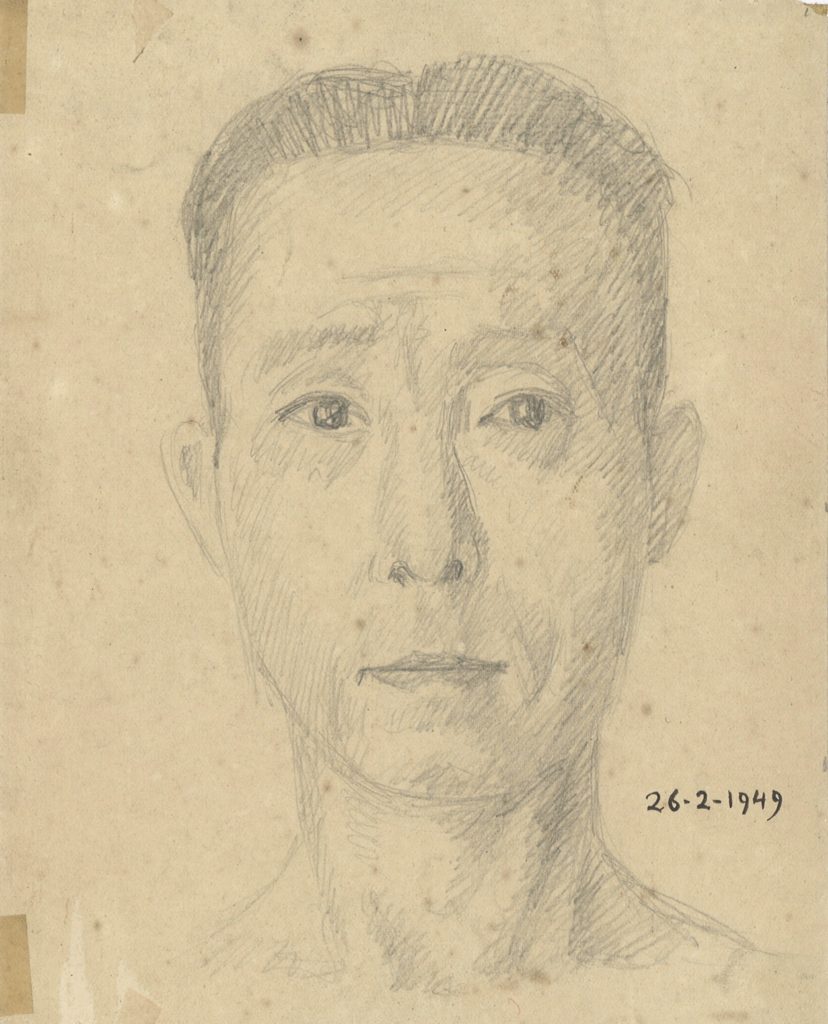
Let us look at the portrait of Tu Mo (1900-1976). He is 58 years old. He is the one who invented, in 1925, in the magazine Tù-dân tap-chi, the character of Ly-toêt. He who wrote beautiful poems in the maquis, he who will publish the following year “Don but” (the fighting feather).

Born in Hanoi, an important actor of the Tu Luc Van Doan movement, Tu Mo was close to the two main newspapers supporting the movement: Phong Hoa (“Mœurs”), created in 1932 and Ngay nay (“Temps présents”) founded in 1934.
We have already talked about the Tu Luc Van Doan movement and its progressive themes. Let’s not come back to it. On the other hand, let us underline the strong influence played by the students of the Hanoi College of Fine Arts: Nguyen Tuong Tam (the future Nhat Lin), Nguyen Gia Tri, Nguyen Cat Luong (“Lemur”), Tran Binh Loc, Pham Hau, just to name a few. We have also already described his strong influence on Luong Xuan Nhi, for example. The common point in all of them is to dust off the old, decadent, archaic mandarin world, and shake it up to the point of malaise.
The next portrait is of Nguyen Thi Binh, in 1958. The granddaughter of Phan Châu Trinh (1872-1926), at the time a student at the Nguyen Ai Quoc Academy, the Communist Party training school, she lived in the North since the partition of the country, as decided at the time of the Geneva Agreements in 1954. We can sense in her portrait the signs of her harsh interrogations by the French Security Police on rue Catinat in Saigon and her detention for three years in Chi Hoa prison. This is in contrast to the elegance and charm she will display later, particularly during the Paris Peace talks.
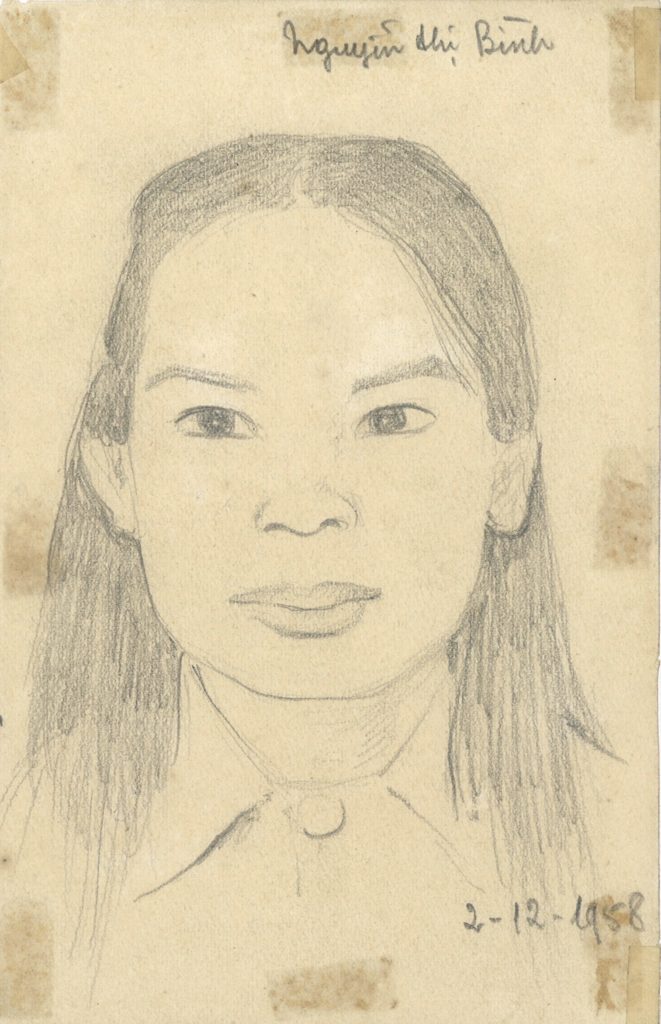
Hanoi, his beloved city, is the occasion for vivid drawings. Two examples seen here, “The Temple of Literature” and the intimate setting of the “Small Lake” (Hoan Kiem), emblematic places of the city, come alive with Ngym’s talented lines in capturing so perfectly the true Hanoi’s atmosphere at the time.
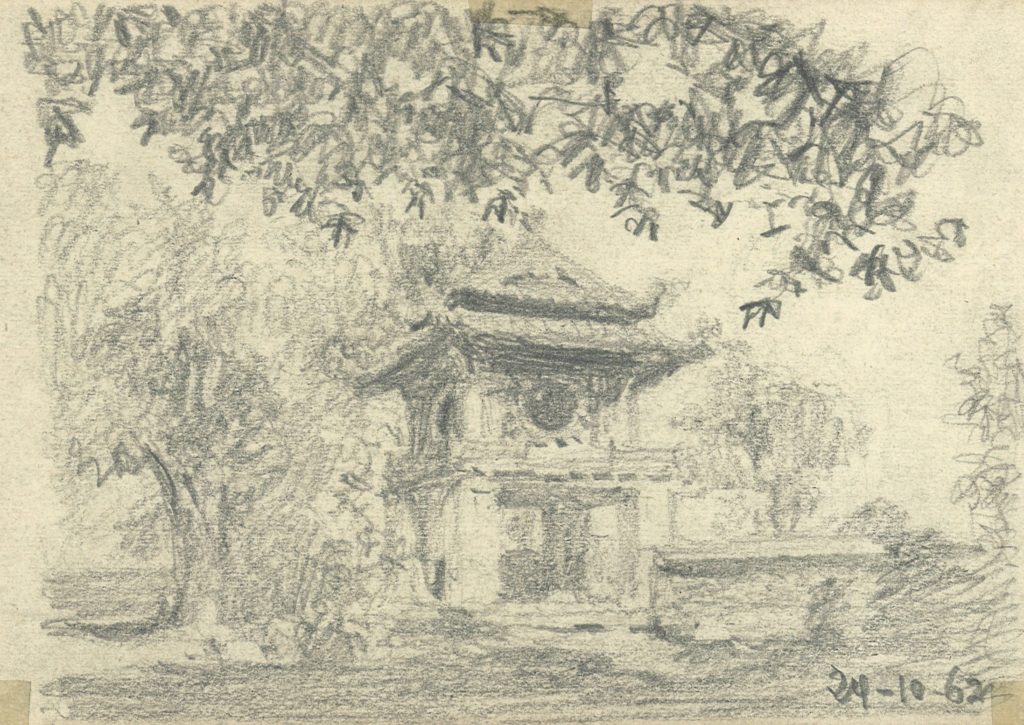
Temple of Literature 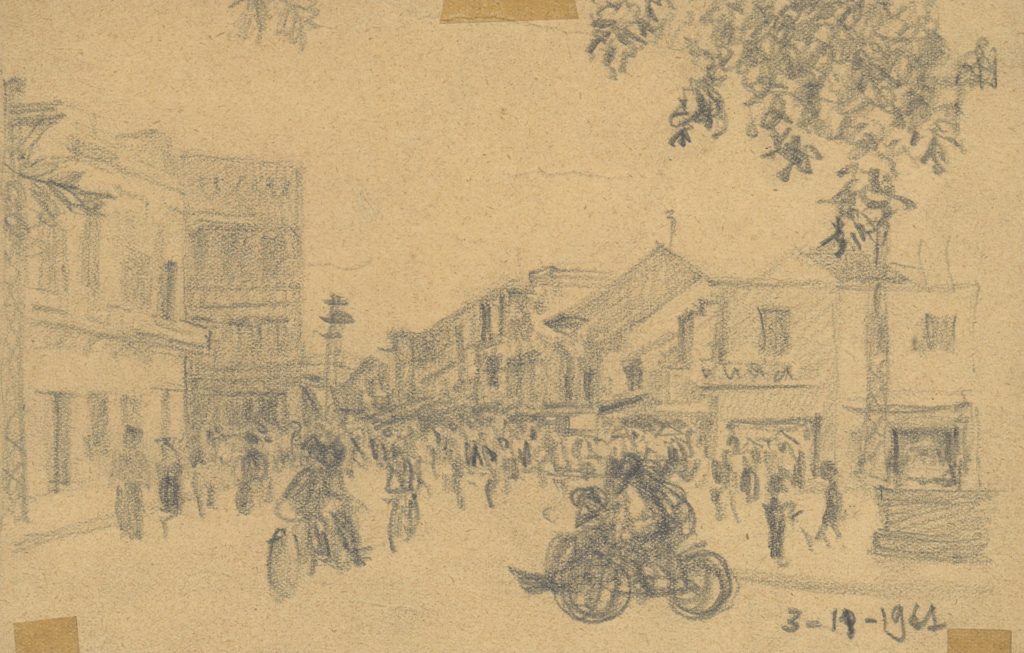
Hoan Kiem (small lake)
He died during the “American” war in Vietnam, far from the problematic – tragic but worthwhile – created by the “Indochina” war. The circumstances of his death are the subject of the kind of rumors one hears and spreads – only after carefully selecting the interlocutor…- as night falls on the Western Lake in Hanoi. One references a portrait he made of Ho Chi Minh, his neck encircled by a snake, symbol of betrayal. This would not have been well received at the highest level of the state and could have led to deadly consequences. The writer Duong Thu Huong best describes this atmosphere, at the same time sweet and pungent, of a certain period (the reading of “At the Zenith” is highly recommended).
Hanoi, that ambiguous city…
Jean-François Hubert